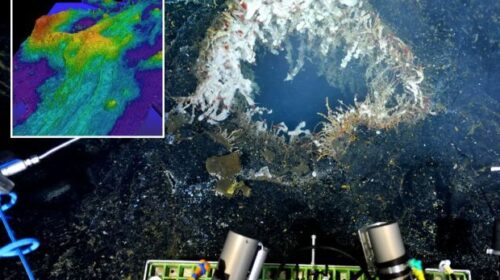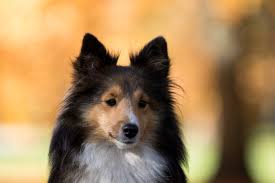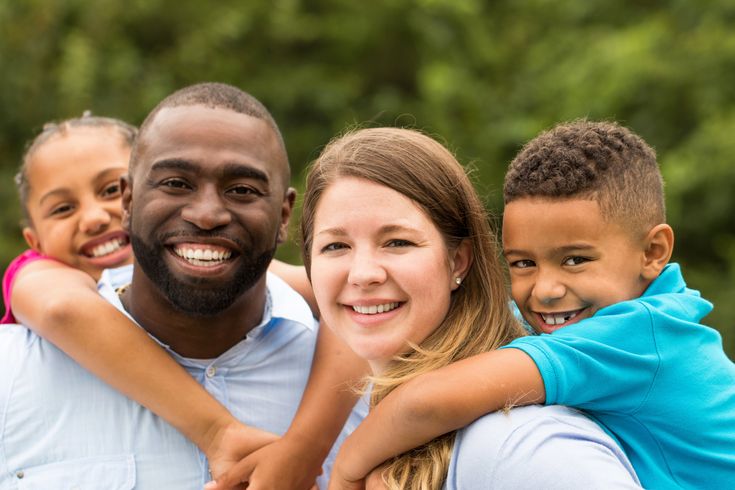In this article, we will talk about dog behavior in life and with people. We will consider the main forms of dog behavior and give advice.
“A dog is a man’s best friend” – this phrase is accepted by most people as truth. Humanity cannot imagine its life without these four-legged creatures. According to statistics, 31% of Russian residents keep a dog. We have purebred dogs and mongrel dogs – it doesn’t matter.
Any dog gives a person the opportunity to feel that we are needed, respected, loved, and admired. Every dog knows its owner thoroughly, in all details, loves him as he is. But do we know them? Do we understand the dog’s behavior?
Very often, a purebred dog is chosen based on the aesthetic perception of its appearance, without thinking about the behavioral characteristics of the breed. Because of this, as the pet grows up, discontent and conflicts may arise between it and the owner. A person does not expect that a small, cute “fluffy” has a habit of barking, becomes large in size, sheds, fights with other dogs, runs away, etc.
Read Also: Advantages of Google Ads or PPC Campaigns for your Online Business
Thus, understanding the motives of the dog’s behavior by the owner can make the friendship stronger and longer lasting.
At the moment, there are a lot of studies of the characteristics of dog behavior and analysis of dog behavior patterns. Let’s dwell on several points of this extensive topic.
Basic forms of dog behavior
A dog is an animal with elements of rational activity. Every owner has more than once observed in their pet, especially an older one (over 5-6 years old), reasonable actions that surprise and delight. It seems to us that a dog is so reasonable that it “almost speaks”. We must not forget that a dog is an animal capable of learning, i.e., learning the lessons of life and adjusting its behavior depending on these lessons.
There are different forms of dog behavior that reflect different aspects of their lives – general or specific. Forms of behavior can be innate (they do not need to be taught) and acquired, i.e. learned under the influence of the environment.

The main forms of dog behavior include:
Food, protective-defensive, retrieving, orientation, search, affection, sexual, parental, play, imitative and communication.
A dog can care for its offspring from birth. The puppy knows how to suck milk, opens its eyes, and begins to play with its peers. If aggression occurs, the dog does not need to be taught to raise its fur, bare its teeth, or growl. Reproduction of offspring also does not require preliminary instruction.
You can read a dog’s thoughts and feelings from its appearance and, based on this, behave correctly with it.
Signs of comfortable behavior:
Stretches wag its tail, yawns loudly, and rolls on its back. Licks its fur, especially the pads of its paws, wipes its muzzle with its paws, wipes its muzzle after eating, and sometimes scratches itself with its back paw. It is comfortable for a dog to roll in the garbage that exudes a disgusting (for us) smell. The reasons for such behavior have not been fully clarified.
A fairly common behavioral element is shaking. This action can be more easily observed when the dog’s fur gets wet, after bathing, rain, etc. At the same time, always when you enter the room and after rain and just a walk. This is both shaking off water and tidying up the fur. You can sometimes provoke shaking by ruffling the dog’s fur
Dogs shake themselves when getting up from sleep, in their beds. And sometimes this is a displaced behavior, reflecting pleasant moments. Sometimes a dog shakes itself before a walk and also stretches, and yawns with sounds. The shaking starts from the head and gradually moves to the body and tail. The latter almost does not shake. But if the dog is very wet, then it shakes the water from the tail, and so much so that it seems ready to “tear” it off.
The dog spends most of its time dozing with its eyes closed, or lying with them open or half-closed. It sleeps less often, but lightly – this is slow, or calm sleep. There are periods of deep, restless sleep that last for minutes and are characterized by such external signs as squealing, yapping, and paw movements.
This is a fast – paradoxical sleep. Usually, one to three such periods follow one another with short intervals of quiet sleep. Domestic dogs spend about 50% of their night’s sleep in short and frequent sleep-wake cycles.
Signs of restless behavior in a dog :
The life of our four-legged pets is not as cloudless as it often seems to us. They react very sharply to quarrels in the family, moving, a visit to the veterinary clinic, hygiene procedures (washing, cutting claws, cleaning ears, combing, etc.), sharp sounds (fireworks), and much more.
Anxiety can be a one-time occurrence or it can continue over time. How can an owner suspect that their dog is feeling uncomfortable? Here are some of the main signs of dog restlessness:
periodic tremors of the whole body;
frequent stretching and yawning;
overexcitement without apparent reason;
whining;
tail constantly lowered under the belly;
urinating in inappropriate places;
vigorous licking to the point of skin injury;
frequent barking, ringing tone;
frequent licking;
disturbances in the sexual cycle in bitches;
If you notice any of these signs in your dog, you should consult a veterinarian or a dog trainer (dog behavior specialist).

Aggressive dog behavior
Normally, aggression performs a defensive function. The dog’s reaction to external danger. Pathological is the perception of other animals as potential victims that must be killed. They can be people (even the owner) and other animals.
Signs of aggressive behavior can be hidden or obvious.
Hidden signs:
the dog turns away from the object of aggression, and does not look at it directly;
moves the wings of the nose; moves to the side with the tail lowered;
can press itself to the ground;
growls quietly.
Pronounced signs:
raised, protruding ears;
grin, all teeth visible;
a hard, intent look at the victim;
raising of the fur along the spine, stretching of the paws (the dog wants to appear larger);
a dull, low growl;
raised, tense tail.
It is important to remember that even a very cute-looking little poodle can bite seriously.
Causes of aggressive behavior in dogs
Ultimately, the causes of such pathology are always the irresponsibility of a person:
uncontrolled breeding (aggressive individuals are not culled from breeding);
lack of training of the dog by the owner;
cruel treatment of dogs (underfeeding, violence, life on a leash);
lack of adequate living conditions (life in stressful conditions);
misunderstanding the dog’s behavioral characteristics. provoking it to aggressive behavior.
How to Correct Dog Behavior
If the dog grew up in your home and you are not satisfied with some aspects of its behavior, you need to analyze the situation completely. You will most likely not be able to solve this problem on your own. You need advice from a zoopsychologist or dog trainer who will help identify the reason for the pet’s negative behavior toward the owner.
Dog behavior after castration?
In general, the behavior of a female dog is less dependent on sex hormones than the behavior of a male dog. After puberty, sex hormones act on male dogs constantly, while on female dogs, only during the heat period. Shortly before the heat, many female dogs can become more nervous and grumpy, or, on the contrary, more affectionate and gentle. Some female dogs have mood swings, most are less willing to exercise and play, and almost all become less tolerant of other dogs.
Often, it is during the heat that your good dog suddenly starts fighting with former friends, regardless of their gender. Females become more loyal to males closer to the middle of the heat, to females – only after its completion. A fairly small percentage of dogs practically do not change during the heat, mainly these are females of working and sport breeding.

After castration, your dog will not have heat, and therefore you will also avoid all these problems. Please note that changes in the dog’s behavior can be caused not only by heat and hormonal surge, and they can rarely be solved only by castration, if any problems arise, it is worth contacting a dog trainer.
Unlike bitches, males are constantly affected by sex hormones. Accordingly, their influence on the behavior of a male is much greater. But do not think that the behavior of a male is completely dictated by the influence of testosterone. Experience and knowledge that the dog gains throughout its life play a major role in its behavior.
Read Also:Advantages of Google Ads or PPC Campaigns for your Online Business
Many people believe that after castration, a male dog will stop marking, will turn from aggressive into a kind person, will start playing with dogs if he used to only quarrel with them, will lose his working qualities and, of course, will stop running after bitches in heat. All this is a big misconception. Let’s take a closer look.
Tags
Let’s start with the fact that it’s not only males who mark. Almost all females leave marks during estrus, many marks outside of estrus, and some even manage to spray poles with a raised paw no worse than males. Marking is not a sexual behavior of a dog, therefore, it cannot be removed by castration. Some males mark less after castration, but not all.
If you castrate a puppy before puberty, the likelihood that he will start marking is significantly reduced, since he will not have time to learn this behavior before castration. If your male dog marks in the apartment, castration can help, but you should be prepared for the fact that it still will not help. Unfortunately, there are no guarantees in this matter, and it is better to contact a dog trainer along with castration.
Aggression
We all know that testosterone increases aggression. Many studies confirm this. However, aggression in dogs depends not only on testosterone. For example, female dogs have less testosterone than male dogs, but they can also be aggressive. Problems with aggression are never solved by castration. You can castrate your male dog, but this will not help on its own. If aggression occurs, first of all, contact a dog trainer.
Neutering a puppy before puberty also does not guarantee that he will not show aggression. Aggression is a complex behavior in which testosterone plays some role, but not the most important one.
Relationship with other males
The most common advice to the owner of an aggressive male dog is to castrate him and he will improve. This is not true. As we have already said in the previous point, aggression is a complex behavior that is determined by more than just testosterone. Most often, problems arise during adolescence. It is at this age that hormones play a major role in the behavior of a young dog.
Males grow older, stronger, bigger, more self-confident and try to find their place in this world. Young males begin to look for the boundaries of what is permitted and try to expand them, it is during this period that they establish their own rules or learn about existing ones.
If you castrate a male dog before puberty, there is a chance that he will be more loyal to dogs. There is also a chance that he will simply not be confident enough for open confrontation, so he will not show aggression. Plus, after castration at any age, the male dog’s smell changes, and other males may interact with him as with a female or a puppy. But castration will not solve existing problems.
If your male dog is aggressive towards other dogs, castration will not eliminate aggression and in some cases may make the problem worse. The best solution is to contact a dog trainer.
Dog Weddings and Escapes
Another very common belief is that castrated males do not run away. It is worth starting with the fact that dogs can run away for various reasons, not only after bitches in heat. A good leash, collar, and behavioral training will help you prevent running away, but not castration. If your male runs away specifically after bitches, you should also not count on castration to solve this problem.
Many people believe that neutered male dogs cannot perform sexual acts. This is not true. Neutered male dogs continue to be interested in female dogs, and if they had such experience before castration, their sexual behavior would remain completely intact. If a male dog has not had such experience, most likely, after some time after castration, he will stop being interested in female dogs in heat. Just like an unneutered male dog, whose sexual behavior is not allowed to develop.
dog weddings
After castration, testosterone levels drop, the male dog’s odor changes, and his self-confidence decreases. If he is not the only contender for a female in heat, other males will likely stop letting him near her. After this, he may continue to run away (but will not mate), or stop running away altogether.
To sum it up, there is a chance that the male dog will stop running away after castration, but it is better to contact a dog trainer after the veterinarian to solve this problem.










